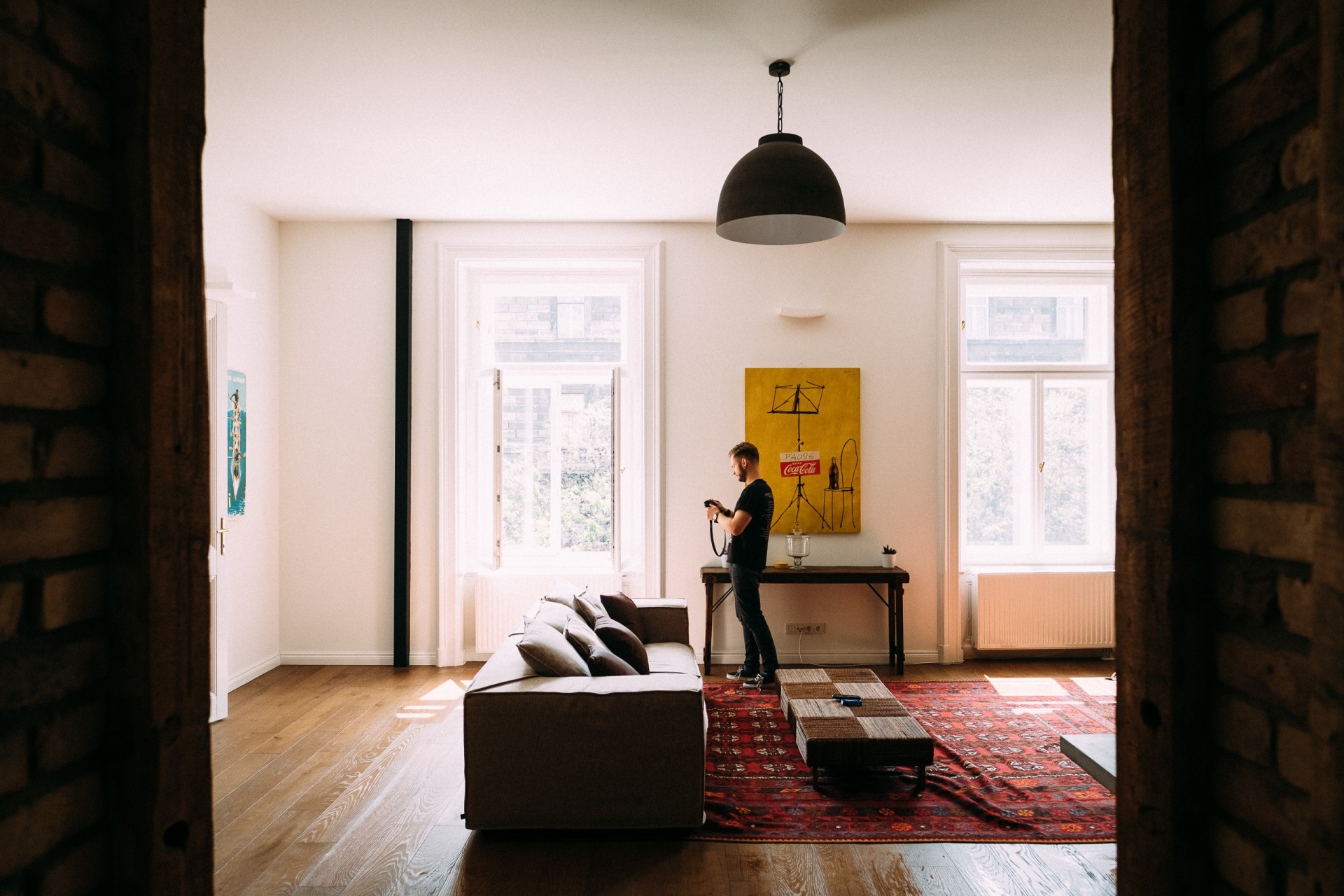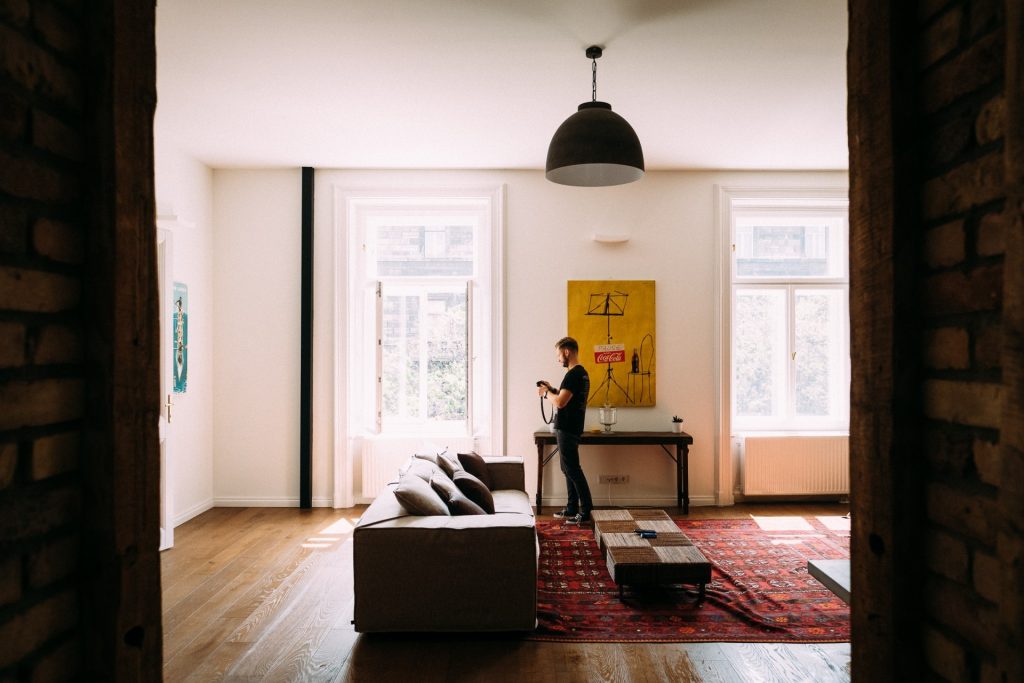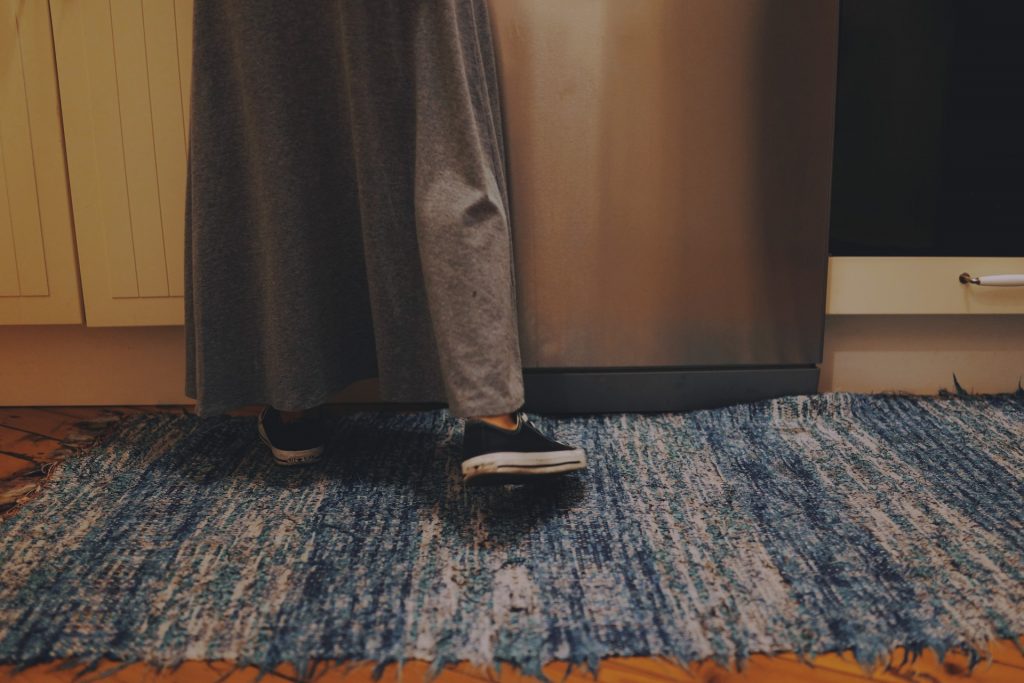Little known staging tips to help your home sell for top dollar
 When scrolling through multiple listing photos online it is easy to see why buyers get discouraged or have a tough time choosing a new place to call home. A home buyer will base their decision on visiting the listing within seconds of viewing that image and if it is not a show-worthy room they see on the screen, you can plan on kissing that lead goodbye.
When scrolling through multiple listing photos online it is easy to see why buyers get discouraged or have a tough time choosing a new place to call home. A home buyer will base their decision on visiting the listing within seconds of viewing that image and if it is not a show-worthy room they see on the screen, you can plan on kissing that lead goodbye.
There are only two major factors that matter at this point the listing’s condition and price. That’s where home staging becomes a thing.
By definition home staging, according to the Real Estate Staging Association, is the act of preparing and showing a property for sale. It is a coordinated and systematic methodology in which knowledge of real estate, home renovations, and creative design principles are applied to attract a potential buyer. Preparing the property involves all or part of cleaning, de-cluttering, updating and repairing while showcasing is the process of arranging furniture, accessories, art, and light.
For sellers trying to make a good impression, home staging has become a popular way to increase a home’s selling price and decrease selling time.
The phrase home staging may sound like a daunting task, though it’s important to understand and remember that it’s only about arranging furniture and decor with the intent to showcase a home for sale. This whole process could cost you as little as nothing, yes, it could be that simple. The bare minimum would be a simple cleaning and the removal of day-to-day living items. But it can also involve some financial investment such as painting, improving the landscaping and adding furniture and plants to give potential buyers an idea of what their new home would look like. It really depends on the current state your property and your target audience to plan to sell to.
According to real-estate professionals, staging isn’t decorating – so don’t get those confused. It’s more like depersonalizing a home so that prospective buyers can imagine themselves in it. This can mean removing family photos, piles of newspapers and the cat’s litter box, as well as adding neutral-colored paint and carpet and buying new appliances.
Home staging has become an increasingly impressive force in helping people sell their homes more quickly and for more money. Its overall goal is to help prospective home buyers emotionally connect with space, hopefully leading to an offer to buy. Home staging isn’t limited to just high-end properties. It has become a standard for homes at all price points. While staging may seem like an additional hassle and expense, the investment can pay off. This article is your guide to home staging. We’ll cover the benefits, process, and reasons to stage your home if you’re considering a move and plan to sell your home for top dollar.
When selling a home, it’s important for the homeowner to understand their home is a product, that must be merchandised and marketed properly. How would you sell your car? Or have your kid dress for school picture day? Or present yourself on a job interview? Most of you would pay close attention to the details to reap the rewards of more money for your car, a great photo to share with the world, or getting the call, you’re hired. So, why should selling a home be any different? If you want to sell quickly at the highest price your priority should be paying attention to the home’s details.
Benefits of Staging a Home
Most people have trouble visualizing a space’s potential, whether that’s figuring out how to lay out an empty room or trying to ignore oddly arranged furniture, clutter or decor that’s not their style. The majority of home buyers can’t easily look past what’s in front of them to appreciate a room’s potential. Staging helps eliminate the buyer’s guesswork.
Buyers decide whether they like the home or not in the first few minutes after entering. There’s only one opportunity to make a first impression, so you don’t want to waste the chance and be the seller who skipped out on staging, especially if there are several houses on the market in your area. Even if without staging you manage to get potential home buyers through the door for one viewing, they may not return for another look if nearby properties appear more enticing. It’s all about perception and how they perceive your property.
Here are four notable home staging benefits to consider.
Supplying a Move-In Ready Home
Many of today’s buyers are looking for specific homes that won’t necessarily require a ton of work before moving in, because honestly, who has the time to gut and renovate? Hence, buyers want move-in ready spaces they can enjoy instantaneously.
According to a Maritz Research Staging poll, 63 percent of buyers are willing to pay more for move-in ready homes. So why not get your home ready for its new owner? Home staging concepts can show sellers how to prepare and showcase their homes for sale so that buyers are able to move right in.
Stand Out Among Neighborhood Competitors
While the market isn’t as competitive as in years past, homeowners still find themselves up against neighboring homes on the market, including new construction. How will you differentiate a home from those other homes for sale?
One way is to stage the space by playing on emotional connection points that will appeal to buyers and stand out in their minds when it’s time to make an offer.
Consider this, if two identical homes were for sale on the same block at the same price, but one homeowner staged their space to showcase the potential lifestyle the buyer could have if they moved here, and the other home looked dirty, cluttered and poorly maintained, which home would the buyer choose? The Real Estate Staging Association National Statistics Report found, when staged first, the vast majority of homes spend less time on the market.
Staged Homes Are Easier to Market
Once a home is staged, space will look like a cover spread in a home magazine, so why not take advantage of the light, spacious, well-designed space created and photograph each room with a wide-angle lens to market the home. Over 90 percent of homebuyers start their search online, and photos of newly staged homes will not only attract buyers to information about the home, but to the front door.
Here’s proof: How are you currently searching for a new home? Do photos determine your perception of the home? Would you go visit a home that had no pictures listed or had clutter center stage? Photos are just one way to easily market a home. With a staging plan in place, a seller will also have systems to keep the home looking like those online snapshots.
Increase Offers and Price
Home staging often requires that some minor repairs be made to space, which can prevent buyers from making low-ball offers because of the work involved to improve the home. Whenever a seller makes strategic repairs or updates to a home, they’re adding value that could be tacked onto the overall sales price. A staged home creates more buyer interest, and with more interest comes more offers, so as a seller you could even find yourself in a bidding war.
Can you imagine making a goal to sell your home a reality that reaps these benefits? Selling a home is no easy task. In a perfect world, a homeowner wouldn’t need to be living in the home while on the market. However, the list of reasons why someone sells is endless and in many cases, forces a homeowner to stay put when selling.
The experience can be grueling for sellers when personal lives become public displays to strangers and their criticisms. If the seller is going to be living in the home when selling they have to willingly be inconvenienced—not only emotionally, but physically. So, what’s the best way to get out from under the microscope? Sell fast with home staging.
Real Estate agents can help with the staging process, but if they don’t know about it they will miss out on these 5 secret benefits from the Home Staging business. Be sure to educate your Real Estate agent or find one familiar with the Home Staging process:
- Home staging will make it easier for your real estate agent to market and sell your listings because your MLS photos will be 100% more enticing, and once visiting a property, home buyers are more likely to make an offer on a home that shows well.
- With 70% (US) to 90% (Canada) of home buyers searching online before ever calling a real estate agent, they will attract more leads with better photos, not only for the staged listing but from active buyers who will want to show them other properties too.
- Home stagers can address problems head-on with you about the things you don’t want to say to your real estate agent for fear of losing the listing. With so many people selling a home due to divorce, a home stager is an independent third party who will save your real estate agent from having to get in between the different opinions of each spouse.
- Home staging is a service a real estate agent can recommend to you as a faster way to sell your home for more money, but they should always know it’s not a service they will personally have to pay for.
- Home staging services can range anywhere from a few hundred dollars for a consultation up to several thousand dollars to fully furnish a large or very high-end home. In every case, the cost to you will be significantly less than the price reduction. This makes for a much easier conversation with your real estate and keeps you on the “same team.”
Most professional home stagers contend that most people will have to spend little to no money on extra furniture and accessories. There are three major exceptions:
- If you’re selling a multimillion-dollar property, any obviously inexpensive or outdated furniture will probably need to be replaced. You can typically rent upscale furniture for a few months.
- If the appliances are completely out of date, they will drop the value of the house. Many stagers recommend buying stainless steel, but as long as everything looks current and is in good working condition, you’ll have more luck selling.
- If there is extreme color in your home, buyers will have a tough time imagining themselves living there. Purple carpets, orange countertops, pink walls and tie-dyed furniture could cause a distraction. Most experts recommend investing in neutral paint and floors and replacing unusual furniture with less eye-catching pieces.
Another good investment, according to most home stagers, is renting storage space. There might be enough room in the house for you to stash everything you need to hide, but you’ll want to free up that space so buyers can see it. A storage space can be a safer place for valuables and important documents, which you may not want to have easily accessible to potential buyers.
If you decide to go it alone, you can still take some tips from the pros. The No. 1 piece of advice for do-it-yourselfers is to ask for honest opinions from family and friends about what needs to be changed.
Let’s be honest: You’re too attached to your home to see it clearly. Homeowners have too many memories and attachments to belongings that can cloud seeing the whole picture. Most homeowners are too personally connected to be objective about their home’s contents. But remember: Your home is no longer your home — it’s a product on the market.
Let’s start with the home’s exterior
Boost curb appeal
This is something you always hear, and with very good reason. Many people thinking of touring your home will do a quick drive-by first, often deciding on the spot if it is even worth a look inside. Make sure your home is ready to lure in onlookers with these tips:
- Power wash siding and walkways
- Hang easy-to-read house numbers
- Plant blooming flowers and fresh greenery
- Mow lawn, and reseed or add fresh sod as needed
- Wash front windows
- Repaint or stain the porch floor as needed
Can you see the house? Trim hedges, trees, and grass so that your house is “framed” like a photo. Make messy hedges uniform in shape, and add color with flowers.
Color is good in flower beds, but not necessarily on the house: Most experts advise a three-color maximum, and many advise using only two paint colors. If you don’t have the money to paint, at least pressure-wash the house, shutters, and walkways.
There are other, sneakier ways to stage the outside of a home. One way to make a dead lawn come to life is to steal a trick from golf courses and spray-paint it. There are nontoxic paints on the market that can cover brown spots in the grass.
Another way is to add artificial flowers, shrubs, and trees. Most silk arrangements, typically arranged in large planters, won’t last long outside in the elements, but many can hold up for a couple months — long enough for you to sell your home.
Make sure the yard is mowed, raked and generally in good shape. Remove toys and pet accessories (and also any sign of pets inside the house). Ask friends or family if they can watch your pet during a showing, so you can get rid of the dog bones and kitty litter. If you have a deck, some stagers suggest buying a new grill to give buyers an idea of where they could be enjoying an evening outside.
Next, we’ll head inside to check out how to stage the interior of your home. There are easy, affordable ways to spruce up the inside of your home. The general advice is this:
Welcome visitors with an inviting porch.
Even if you have only a tiny stoop, make it say “welcome home” with a clean doormat, potted plants in bloom and — if you have room — one or two pieces of neat porch furniture. Keep your porch lights on in the evenings, in case potential buyers drive by. Illuminating the front walk with solar lights is a nice extra touch, especially if you will be showing the house during the evening.
Get your house sparkling clean
From shining floors and gleaming windows to clean counters and scrubbed grout, every surface should sparkle. This is the easiest (well, maybe not easiest, but certainly the cheapest) way to help your home put its best foot forward. You may want to hire pros to do some of the really tough stuff, especially if you have a large house. Don’t skimp!
Clean, clean, clean. This is the most important rule of staging a home. And cleaning doesn’t just mean vacuuming the carpet and scrubbing the bathroom (although that’s important, too). It includes cleaning under the countertops, replacing shower curtains, cleaning the grout between tiles, steam-cleaning the carpets, dusting the crown molding and ceiling fans, washing the windows (inside and out), polishing all fixtures and wiping down all appliances (inside and out). There should be no sign of dirt anywhere, and sometimes homeowners miss spots because they forget that some places even exist — for instance, windowsills and closet interiors. Using a professional cleaning service might be a wise investment.
Sell the space, not the stuff
If you are serious about staging your home, all clutter must go, end of story. It’s not easy, and it may even require utilizing offsite storage (or a nice relative’s garage) temporarily, but it is well worth the trouble. Clean and clear surfaces, floors, cupboards, and closets equal more space in the eyes of potential buyers, so purge anything unnecessary or unsightly.
But it’s my style! Guess what? It may not be the style of those seeking to buy a house in your neighborhood. So even if you have an awesome vintage-chic look going on, relocate it for the sake of appealing to the most number of people. You can bring your personal style back into play in your new home.
The most important thing you can do to prepare your home for sale is to get rid of clutter. Make a house rule that for every new item that comes in, an old one has to leave. One of the major contributors to a cluttered look is having too much furniture. When professional stagers descend on a home being prepped for market, they often whisk away as much as half the owner’s furnishings and the house looks much bigger for it. You don’t have to whittle that drastically, but take a hard look at what you have and ask yourself what you can live without.
You’re going to have to clear out your things so buyers don’t have to look past your family photos to see your home. To prevent potential buyers from getting distracted, you should remove all memorabilia. Some stagers even recommend removing mirrors so buyers don’t get sidetracked by seeing themselves. However, others say that mirrors can make a room appear larger, so it can depend on the home. And clearing the kitchen counters of appliances allows you to sell the counter space instead of the appliances. After all this purging, you could be left with empty walls, so many home stagers will find cheap art outside — it can be as simple as gathering leaves and enclosing them in simple frames. Most stagers also recommend depersonalizing bathrooms by replacing personal hygiene items with plants or pottery.
Style your dining room table
The dining room is often a blind spot in decorating the home. Between dinners, a large dining table can look bare and uninviting, so styling it up with visitors in mind can increase the appeal. An oversize arrangement can look too stiff and formal, so try lining up a series of smaller vessels down the center of the table instead.
In the living room, symmetrical arrangements usually work well. Pull your furniture off the walls and use pairs (of sofas, chairs, lamps) to create an inviting conversation area.
You should also arrange furniture so it’s easy for potential buyers to navigate a room. Typically, this involves removing furniture (another good reason to rent storage space), but also pay attention to the room as a whole — if there’s too much furniture or decor on one side, it can feel lopsided. And whatever you do use to decorate, group them in objects of three at varying heights to make them pleasing to the eye but not distracting or cluttering.
Let there be light
If a room is clean (and it should be), let the buyers see it. Most pros recommend maximizing natural light by opening curtains and shades — some even suggest removing all window dressings, as long as there aren’t obvious holes and nails in the wall when they’re taken down. If weather permits, open windows let in fresh air, an added bonus because it removes your scent, which can further distract buyers. Also, turn on all the lights in the house to make rooms appear brighter and bigger.
If you have a small bathroom but a huge cabinet-style sink, consider swapping it out for a simple pedestal version. Your bathroom will appear instantly bigger.
In a slumping market, however, the goal may be to retain as much of the original price as possible. If you want (or need) to quickly unload your property, you might have to lower the asking price — but home staging could help you avoid that.
So, if your staged home sells quickly, you could be saving yourself from a price reduction.
Always remember to declutter and depersonalize a home prior to listing. Get the bad smells out! Remove anything that limits traffic patterns. Paint the walls with neutral colors and replace the carpet if it looks worn out. These tasks should be completed well before any attempt is made to stage a home. People can see through the nice décor to the frayed carpet underneath! In the end, make it shine online, and as long as the home feels well-maintained, it will sell — and sell for top dollar.


